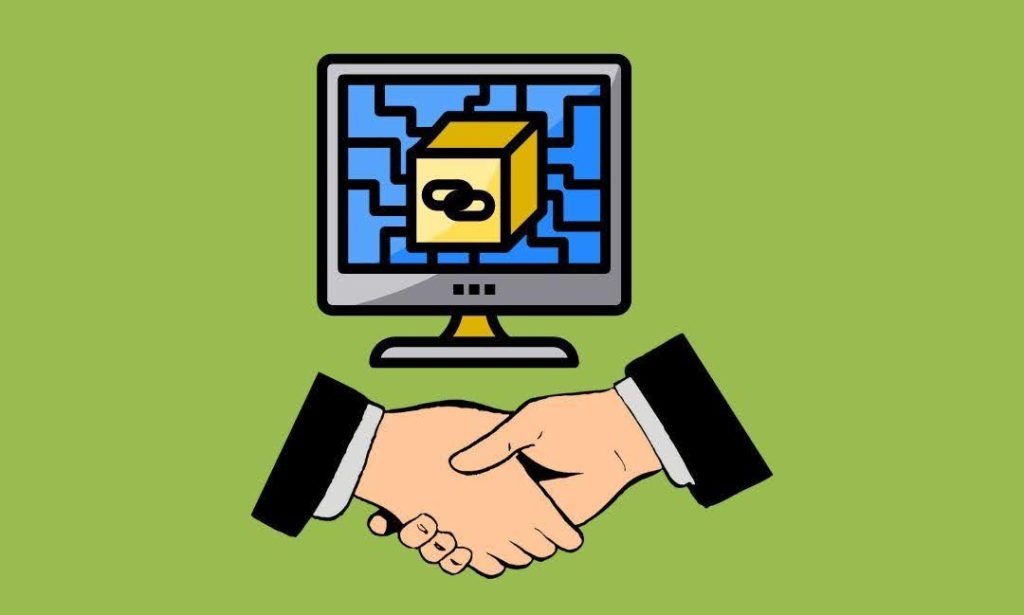To make a remote work culture successful, one of the fundamental steps is to invest in an effective onboarding process. It tackles particular difficulties like the lack of in-person interactions, and the requirement to remotely communicate corporate culture.
In this blog, we discuss some incredible strategies for a successful remote onboarding process, ranging from establishing clear expectations early on to creating an end-to-end employee handbook.
Let’s review the fundamentals of remote onboarding first, though, before we delve further.
What is Onboarding?
Simply put, the process of integrating a new hire into an organization is known as onboarding.

It includes:
- Introducing the new hire to the company culture, policies, and procedures
- Providing necessary training and resources
- Setting up workspaces and required technology
- Familiarizing them with their role and responsibilities
- Connecting them with team members and key contacts
Onboarding is the process of integrating new employees into a team, often starting with an acceptance offer and lasting for weeks or months, aiming to enhance performance and retention.
Onboarding Remote Employees – Tips to Boost Your Process
Let’s examine the essential aspects to focus on during the onboarding of remote workers, offering you useful advice to improve your process.
1. Pre-Onboarding Preparation
The onboarding process for remote hires requires proper preparation, including taking necessary actions during the pre-onboarding stage to ensure a smooth transition.

a) Designate a remote onboarding buddy: Assign an experienced team member to be the new hire’s point of contact for advice and queries. From the beginning, this buddy system can make remote workers feel more connected and supported.
b) Prepare the relevant documentation: Gather all the paperwork, including employment contracts, and corporate guidelines. Simplify the paperwork process by utilizing digital signature technologies.
c) Send a greeting by email: Send a warm welcome email to the new hire, detailing their schedule, login credentials, and any necessary homework to complete before their start date.
Companies with a standard onboarding process experience 50% greater new hire productivity.
Devoting time to pre-onboarding tasks can demonstrate commitment to a new hire’s success and foster a positive remote work environment.
2. Virtual Welcome Package
A well-considered welcome package can greatly influence a remote employee’s initial impression of your company.

Here’s how to design a captivating online welcome package:
a) An electronic employee handbook: Make a digital handbook that is interactive, simple to use, and describes the policies, practices, and company culture. Provide FAQs and links to relevant resources.
b) Company swag: To make the new hire feel like a member of the company, send them a physical goodie bag with branded things like a branded t-shirt, notebook, or coffee mug.
c) Virtual office tour: Create an interactive presentation or video that highlights your actual office space, if any, and introduces important team members.
d) Welcome video: To help a new hire feel appreciated and welcome, record a personalized welcome message from the CEO or the department head.
e) Team directory: To assist the new hire in getting acquainted with their coworkers, provide them with a digital directory that includes pictures, job descriptions, and a synopsis of each team member with their contact details, if needed.
f) First-week schedule: Provide a thorough schedule for the employee’s first week of work, together with links to meetings and specific goals for each session.
69% of employees are more likely to stay with a company for three years if they experienced great onboarding.
An effective virtual welcome package can make remote workers feel immediately at ease, by providing a physical representation of your corporate culture.
Also Read – Keep your remote team connected with a virtual coffee break
3. Technology and Infrastructure Setup
It is essential to make sure remote workers have access to the equipment and technology they need to do their tasks well.

To expedite the tech setup procedure, adhere to following steps:
a) Supply necessary hardware: Provide any necessary hardware, including computers, monitors, or headphones, well in advance of the scheduled start date. Include clear setup instructions and offer remote IT support if needed.
b) Software and tool access: Grant access to all necessary software, platforms, and tools. Provide documentation or video tutorials on how to use each tool effectively.
c) VPN and security protocols: Set up secure VPN access and educate new hires on cybersecurity best practices for remote work.
d) Home office setup guide: Offer guidance on creating an ergonomic and productive home office space. Consider providing a stipend for essential office equipment.
Organizations that support remote work have 25% lower employee turnover than those that don’t.
Making sure everything is set up properly will save time and effort,and help new remote workers get started right away.
4. Establish Clear Communication Channels
Seamless and efficient communication is essential for remote work to be successful. Put these tactics into practice to guarantee clear communication among remote workers:

a) Regular team meetings: Schedule recurrent team meetings to promote cooperation and to ensure that everybody is aligned with the objectives and goals.
b) Virtual open-door policy: Assist managers in establishing virtual “office hours” during which distant workers are welcome to stop by for unscheduled chats or queries.
c) Introductions across functions: Organize virtual get-togethers with important stakeholders from various departments to aid remote workers in comprehending the larger organizational framework.
d) Document sharing and collaboration: To expedite teamwork and information-sharing, use cloud-based document sharing and real-time collaboration solutions.
Effective internal communication can improve employee productivity by up to 25%.
Strong communication lines will help you build a collaborative and connected remote work environment.
5. Cultivate Company Culture Remotely
While it can be difficult, establishing a strong corporate culture in a remote environment is essential for retaining and engaging employees.

To help distant workers feel like they belong, use these strategies:
a) Reinforce corporate values: Frequently share and demonstrate company values via leadership communications, newsletters, and virtual town halls.
b) Employee resource groups: Encourage the establishment of online groups to help remote workers feel included and part of a community.
c) Cultural ambassador programme: Assign cultural ambassadors to assist newly hired remote workers in assimilating into the company’s unique culture.
d) Shared experiences: To foster shared experiences among remote workers, plan company-wide virtual events like guest speaker series or charitable endeavors.
Companies with a strong onboarding process improve new hire retention by 82% and productivity by over 70%.
In a remote work environment, you can foster a sense of purpose and values among new personnel by actively promoting your corporate culture.
Also Read – Virtual Teams Best Practices
6. Feedback and Evaluation
Remote employees must receive regular feedback and evaluations in order to thrive.

Put these tactics into practice to establish a strong feedback loop:
a) Anonymous surveys: Obtain candid feedback regarding the remote work environment and onboarding procedure by conducting frequent anonymous surveys.
b) KPIs for performance: Determine quantifiable, explicit KPIs for remote work and the position held by the individual.
c) Action plans for improvement: Work with recently hired employees to produce customized action plans that address areas for growth,in response to feedback.
92% of employees said that feedback is effective at improving their performance.
You can help your remote workers to develop by putting in place a thorough feedback and evaluation system.
7. Wrap-Up and Follow-Up
It’s critical to make sure there is a seamless transition into regular work habits when the official onboarding period draws to an end.

Here are some onboarding follow-up and wrap-up techniques to consider:
a) Continued support plan: Provide the employee with relevant resources for on-going support, such as extra training materials, mentorship opportunities, and frequent check-ins.
b) Feedback on the onboarding process: To pinpoint areas that need improvement, get in-depth feedback on the new hire’s onboarding experience.
c) Connect with leadership: Schedule a virtual meeting with senior leadership to discuss the employee’s thoughts, goals, and first impressions of the organization.
d) Honour achievements: Give a virtual celebration or acknowledgement to celebrate the employee’s accomplishments to date and the end of the onboarding phase.
e) Ongoing enhancement: Utilize the knowledge acquired from every remote onboarding experience to improve and streamline your process for upcoming hires.
Continuous learning and development is a critical factor for 87% of employees when choosing to stay with or leave a company.
You can make sure that remote workers feel supported after the first onboarding phase and are prepared for long-term success in your company by putting in place a comprehensive wrap-up and follow-up strategy.
Also Read – 9 best practices for engagement in virtual meetings
Conclusion
While there are particular difficulties involved with onboarding remote workers, with proper preparation and execution, the process can be successful and provide the groundwork for long-term employee success and happiness.
Pre-onboarding preparation, virtual welcome packages, technology setup, training and development, communication channels, company culture, feedback and evaluation, wrap-up and follow-up are the eight essential areas to concentrate on when creating a comprehensive remote onboarding experience that will captivate new hires and help them blend in with your team.
Never forget that onboarding is a continual process where it’s important to keep becoming better. To improve your remote onboarding approach, ask both new hires and current staff for feedback on a regular basis.
Investing in a successful remote onboarding process will pay off by increasing employee productivity and retention as well as creating a solid, unified remote workforce that propels your business forward in the digital era.
FAQ
Virtual tours, customized video messages from management, and interactive workshops are used to introduce company culture to distant workers. These tools help to communicate key values and organizational culture.
Remote onboarding is facilitated by communication systems like Slack and Microsoft Teams, as well as document-sharing services like Google Drive, ensuring seamless integration into the company. For an interactive onboarding experience, consider using video conferencing tools like Airmeet, which offers features such as virtual tables for group discussions, live Q&A, and networking opportunities to enhance engagement and connectivity.
Ensuring proper training and support for remote employees involves creating accessible online training modules with recorded sessions for flexibility. Assigning mentors or buddies provides personalized guidance, while regular virtual check-ins help assess progress, address questions, and provide ongoing support throughout the onboarding process.
To integrate remote employees into existing teams, prioritize regular video calls and team meetings to foster interaction and collaboration. Encourage informal virtual gatherings and involve remote hires in team projects or cross-functional initiatives to build relationships and understanding of team dynamics.
Remote onboarding success is assessed through questionnaires and interviews, tracking early retention rates and productivity time to optimize onboarding tactics and understand employee experiences.




























